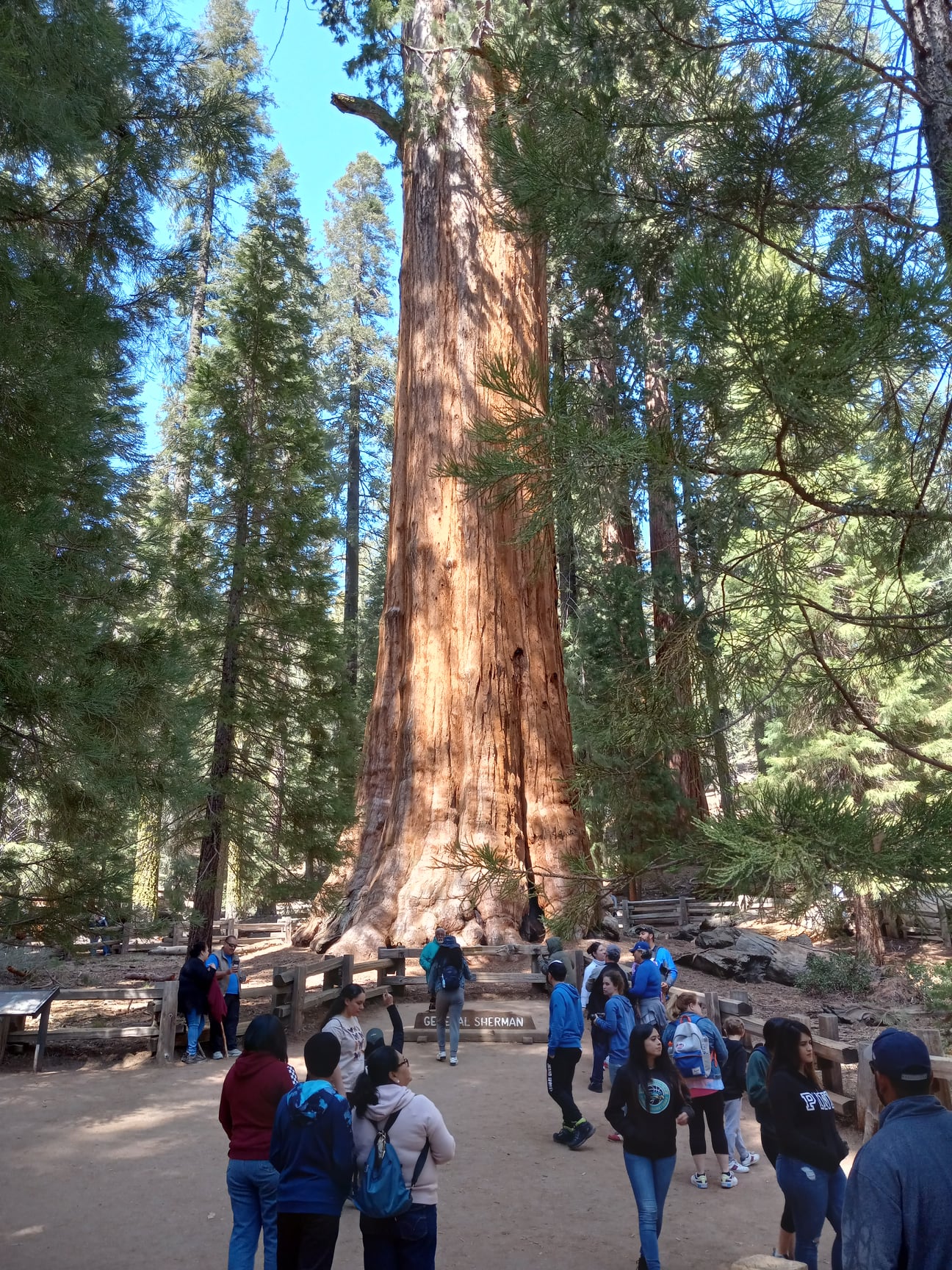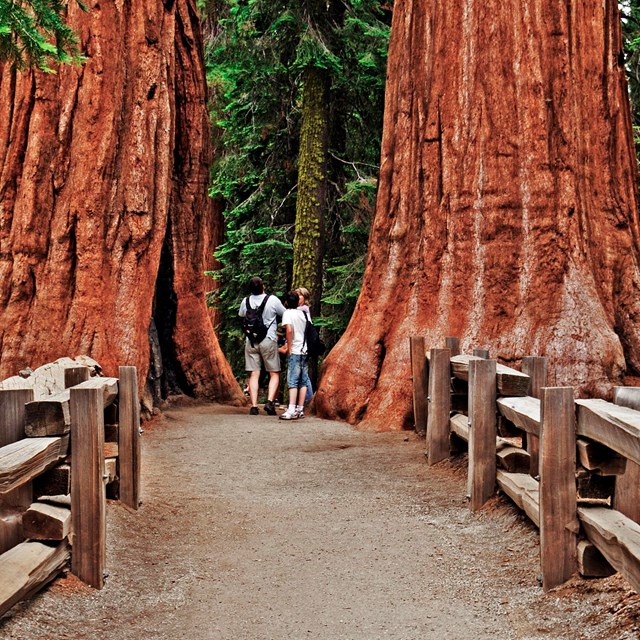Explore the Diverse Wildlife Habitats Within Sequoia National Park
Sequoia National Park is an environmental treasure, showcasing an outstanding array of wild animals habitats that add to its rich biodiversity. From the stunning huge sequoia woodlands to the diverse towering meadows, each atmosphere plays an essential duty in sustaining various varieties, consisting of both typical and unusual animals.
Review of Sequoia National Forest
Sequoia National Park, snuggled in the southerly Sierra Nevada chain of mountains of The golden state, is renowned for its breathtaking landscapes and looming huge sequoias. Developed in 1890, it is just one of the earliest national forests in the USA, devoted to maintaining the natural beauty and environmental integrity of this special region. The park encompasses over 404,000 acres of varied surface, featuring magnificent mountains, deep canyons, and lush meadows.

Site visitors can check out numerous treking tracks, varying from leisurely strolls to challenging backcountry courses, each providing a distinct viewpoint of the park's magnificence. With its combination of natural marvels and leisure opportunities, Sequoia National forest acts as an important haven for both wildlife and those looking for to get in touch with nature.

Significant Wildlife Habitats
The diverse landscapes of Sequoia National forest develop a mosaic of wildlife environments that sustain a rich variety of species. These habitats vary from rich meadows and dense forests to rocky alpine areas and large river valleys, each giving special eco-friendly particular niches.
One noticeable environment is the gigantic sequoia forest, defined by towering trees and an abundant understory, which sustains numerous creatures, birds, and bugs. The mixed conifer woodlands, made up of species such as sugar want and white fir, offer added sanctuary and food sources for wild animals.
Meadows and meadows play an essential duty in the park's ecological communities, working as crucial foraging premises for herbivores like deer and small creatures. These open locations also bring in varied bird types, particularly throughout migration periods.
The park's greater elevations include towering habitats, where conditions are rough and types are adjusted to make it through in such extremes (Sequoia National Park hour). Here, one can discover one-of-a-kind plants and animals that prosper in rocky, cold settings
Plants and Animal Diversity
Within the diverse environments of Sequoia National Park, an impressive range of plants and fauna coexists, showcasing the intricate connections that sustain the park's biodiversity. The park is home to over 1,300 plant types, consisting of the famous giant sequoias, which are amongst the biggest and oldest trees on Planet. These majestic trees offer essential habitat and food resources for different wildlife, cultivating a complex web of eco-friendly communications.
Animal varieties in Sequoia National Park are just as diverse, with habitats varying from lowland foothills to high towering environments. Creatures such as black bears, mule deer, and bobcats flourish in this abundant ecological community, while avian species, including the impressive golden eagle and the elusive discovered owl, grace the skies. Amphibians and reptiles, like the Sierra newt and the western rattlesnake, likewise play crucial functions in preserving eco-friendly equilibrium.
The park's unique mix of altitude slopes and microclimates sustains these diverse species, highlighting the relevance of preserving the natural habitats that allow such a rich tapestry of life to grow. Recognizing this variety is essential for valuing the eco-friendly value of Sequoia National forest.
Preservation Initiatives in the Park
Preservation efforts in Sequoia National Park play an important function in protecting its special environments and the varied types that inhabit them. The park employs a diverse approach, consisting of environment repair, types keeping track of, and intrusive varieties monitoring. These efforts are essential for maintaining the delicate equilibrium of the park's ecological communities, which include large sequoias, fields, and alpine environments.
Energetic remediation tasks concentrate on reestablishing native plant communities and fixing up degraded environments. Sequoia National Park hour. This is particularly crucial in areas affected by human activity next page or all-natural disturbances such as wildfires. The park's biologists carry out normal surveillance of crucial species, consisting of the threatened Sierra Nevada bighorn lamb, to examine population wellness and inform monitoring techniques
Intrusive varieties pose a substantial risk to the park's biodiversity. Via these extensive campaigns, Sequoia National Park strives to safeguard its rich natural heritage for future generations while ensuring the strength of its varied wildlife habitats.
Tips for Wildlife Monitoring
Observing wildlife in Sequoia National forest provides an unique chance to attach with nature and value the diverse types that thrive in this amazing habitat. To optimize your wildlife monitoring experience, think about numerous necessary ideas.
Firstly, plan your browse through throughout very early morning or late afternoon, as these times are most energetic for many animals. Bring field glasses to observe wildlife from a safe distance without interrupting their natural actions. Additionally, acquaint on your own with the species you want to see; recognizing their habits and habitats can enhance your possibilities of identifying them.
Patience is crucial; wildlife monitoring usually needs waiting silently and recognizing your environments. Stay on assigned trails to decrease your influence on the ecological community and ensure your safety and security. It is likewise a good idea to maintain a considerate distance from pets, staying clear of any type of activities that might worry them or disrupt their environment.
Last but not least, consider signing up with led tours led by knowledgeable park rangers. These specialists can give important understandings and increase your chances of observing wildlife in their all-natural settings. By complying with these suggestions, you can enhance your experience and add to the preservation of Sequoia's wildlife.

Final Thought
Sequoia National Park offers as a crucial shelter for diverse wildlife, showcasing an impressive array of environments that sustain countless varieties. Inevitably, the park's biodiversity highlights the importance of maintaining such natural landscapes for future generations.
Comments on “Sequoia National Park Location-- Directions and How to Get There”